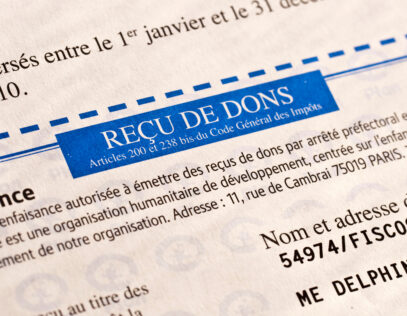There’s an old saying about transfer pricing that goes something like this, “Transfer pricing isn’t just about doing the right thing, it’s about being seen as doing the right thing.”
And here’s a little secret: Perceptions—the good ones and the bad—are based largely on one thing: a company’s transfer pricing documentation. When a company reports high earnings in a country where the office is a mailbox and there’s not a single employee to be found, well, which tax authorities are going to perceive that as logical or right? Certainly none that we know.
Today’s tax authorities are more sophisticated, more educated, and frankly, more suspicious than ever, often assuming every multinational company involved in transfer pricing is also involved with base erosion and profit shifting—the practice of shifting profits out of a high-tax jurisdiction into a low- or no-tax country. Granted, it seems unfair that multinational companies should have to operate under such a cloud of mistrust, but don’t get on your high horse just yet. According to the Tax Justice Network, countries lose $427 billion in tax revenue each year from corporate tax abuse and private tax evasion. Corporations are reportedly shifting $1.38 trillion in profits each year into tax havens—jurisdictions that charge little or no tax. Where does that leave jurisdictions in which the profits are actually created? With a loss of about $245 billion in annual revenue.
Now, more than ever, cross-border tax authorities are working strategically—and often together—to prevent base erosion and profit shifting and transfer pricing documentation is among the most powerful tools to help them do it. A huge compliance burden for multinational companies, documentation lets tax authorities see—and evaluate—a multinational company’s cross-border moves. How much profit are they earning? How much tax do they pay where? And are transfer prices between related parties calculated at arm’s length?
From the taxpayer side of things, the complication transfer pricing documentation presents isn’t only about the utter transparency (though that is a hard pill to swallow), there’s also the fact that every jurisdiction has its own regulations—particularly for the local file—and each unique set of rules must be followed to a T. To make matters worse, documentation regulations are often changing, so while you may meet Italy’s requirements this year, next year’s may change—which means a whole new string of hoops to jump through. In 2022, new documentation requirements (for FY 2021), have already gone into effect in Thailand, Portugal, Jordan, and Denmark, and the U.K. has promised new regulations, which will likely debut this spring.
While transfer pricing compliance is challenging for companies that have operations all over the world, it’s still an endeavor worth doing and worth doing well. Sure, documentation, and the myriad regulations surrounding it, can be a burden for multinational companies, but it can also present an opportunity. Transfer pricing documentation is a chance to tell your story, explain your business, and—believe it or not—actually avoid penalties and adjustments. In other words, it’s a chance to be proactive. The only catch? You’ve got to get it right.
What’s the Point of Documentation?
According to the OECD, transfer pricing documentation has a few important objectives. The first is to ensure taxpayers consider transfer pricing rules when establishing prices, like meeting the arm’s-length standard. Documentation also ensures that the income derived from intercompany transactions is reported in a company’s tax return. The remaining objectives are geared toward tax administrations: Documentation provides relevant information to make a transfer pricing risk assessment—a determination of how likely it is that a company’s transfer prices may need adjustment—and lastly, to ensure tax administrations are armed with the necessary information to audit transfer pricing and also, transfer pricing practices.
The OECD created an action plan to prevent Base Erosion and Profit Shifting, or BEPS, as it’s commonly referred. BEPS Action 13 recommends a three-tier approach to documentation: a master file, a local file, and a country-by-country report. The master file is a big-picture overview of the company. The local file reports on the local entities’ involvement in transfer pricing transactions. Meanwhile, the country-by-country report is an overview of a company’s financials. Incidentally, the country-by-country report has paved the way to tax transparency, as the report is shared between tax authorities in jurisdictions linked by tax treaties. There are recommendations to take transparency even further by making country-by-country reports public—a move the EU has already adopted—which would land multinational companies in a boat that’s even more vulnerable than the one they’re in now.
Many countries follow OECD guidelines in terms of documentation, but they may add variations, or country-specific requirements. Take Italy, for example. Along with preparing documentation in Italian, the government mandates documentation in a certain structure and format, which strays from the one the OECD recommends. The United States is another good example. The U.S. mandates transfer pricing documentation in the form of 10 principal documents, and while the information is much the same as the information recommended by the OECD, it’s not in master- and local-file format.
BEPS Action 13 recommends a three-tier approach to documentation: a master file, a local file, and a country-by-country report.
Work Globally, Report Locally
Tax authorities want to see what’s happening inside their borders, which makes the local file of particular interest. Incidentally, it goes by many names. In Australia, for example, the local file is called LCMSF, an abbreviation for a combined local and master file. Poland refers to it as the transfer pricing return or TP-R, and Belgium calls it the local file TP form. No matter which name it’s given, generally the local file should provide detailed information about specific intercompany transactions in a single jurisdiction. Typically, it includes factual information about local entities, a detailed description of an entity’s business strategy, a local organization chart, financial information, and also key transfer pricing analyses: the functional analysis, where a company explains which entities perform which functions, contribute which assets, and assume which risks; and the economic analysis, where a company proves arm’s-length transfer prices via an approved transfer pricing method.
Details are key—you’ll be expected to list the local management structure, right down to the job titles and the names that fill them. It sounds like a big ask, but the more forthcoming you are, the better off you’ll be. Tax authorities work with all kinds of businesses, but they have no expertise in those specific businesses. So, it’s up to you to make sure tax authorities understand your company, including its local competitors, and how certain conditions may affect it. Remember, tax authorities are likely to see documentation a few years after a fiscal year, so it’s wise to explain economic or legal conditions that existed at the time of a transaction.
COVID-19 is a perfect example of an extraordinary circumstance that will require detailed explanation. Today, businesses are scrambling to fix broken supply chains, continuously finding new homes for functions, assets, and risks; but if in a few years an auditor is combing through your documentation, the impact of the pandemic may not be top of mind. If profits look suspicious to tax authorities, it’s best they know the business was operating in unusual times. Proactively defining conditions is an opportunity for taxpayers—take it.
“Tax authorities are likely to see documentation a few years after a fiscal year, so it’s wise to explain economic or legal conditions that existed at the time of a transaction.”
If You Do One Thing Well, Let It Be the Functional Analysis
Recently, a French manufacturer owned by a Swedish group found itself in a bit of trouble over its 2009 and 2010 transfer prices. The French tax authorities questioned the transfer prices for products sold to related-party distributors outside of France and claimed the manufacturer owed France $6.2 million in back taxes. The problem? The French tax authority based its case solely on numbers—the taxpayer’s arm’s-length range resulted from a net-margin ratio that failed to align with seemingly appropriate benchmarks. Given the numbers, it may seem like an open-and-shut case, but the dispute went to three courts and the taxpayer was ultimately vindicated. What saved the company from an enormous tax bill? A robust and well supported functional analysis.
The heart of transfer pricing documentation is the functional analysis, a detailed outline of a group’s functions, assets, and risks. Almost everything in your transfer pricing documentation stems from the conclusions of the functional breakdown. Transfer pricing comparables share functions. Profits are assigned based on each entity’s contributions to the business: Those taking on low-risk functions should get lower returns than those assuming decision-making roles and perhaps high financial risks. For the taxpayer’s benefit as much as the tax administration’s, this is one piece of the puzzle that must be done right.
A functional analysis should include details about each entity in the report. Tax authorities want to know what types of activities they perform, as well as about contractual terms, business cycles, the geography they cover, and so on. Which entities contribute assets also have to be analyzed. Maybe an entity owns intellectual property that another entity uses. Value creation will determine profit allocation, so it’s critical to know how much each entity contributes. Risks must be considered, as well. A risk analysis documents the risks each entity assumes: If a local distributor holds inventory that has an expiration date, it assumes inventory risk. If a manufacturer is dealing with staffing issues related to COVID-19, it’s assuming operational risk. If a company is lending money, it’s assuming credit risk. Risk is a determining factor in a company’s return. Just ask that French manufacturer, who proved that the strategic risks the company assumed affected profitability.
“The functional analysis is one piece of the puzzle that must be done right.”
Secrets of a Stellar Economic Analysis
Where do comparables, transfer pricing methods, and arm’s length ranges come into play? The economic analysis. This part of the local file demonstrates that transfer prices are calculated at arm’s length.
There are five commonly used transfer pricing methods: the comparable uncontrolled price method (CUP), the resale price method, cost-plus method, the profit-split method, and the transactional net margin method (TNMM). The OECD recommends using the “most appropriate method,” which means choosing the one that’s most organic to your transaction. You’ll be expected to explain why a chosen method is the most appropriate and why you rejected the others. It may seem like an unnecessary task, but take it seriously. Transfer pricing methods are one of the most challenged parts of documentation by tax authorities—and when challenged, the risk of adjustment is high.
Believe it or not, even transfer pricing methods can be localized. While most countries “accept” the OECD-approved methods, they often still have unspoken preferences, which means you’ll have to do a little mind-reading or a lot of research. France, for example, accepts all transfer pricing methods but prefers the transactional net margin method. Guatemala prefers the CUP, resale price, and cost-plus methods over the TNMM and the profit-split method. When a country has a preference, act as though it’s official law.
The economic analysis requires you to identify the tested party, which should always be the least complicated entity in the transaction. Like transfer pricing methods, other parts of the economic analysis are localized, too. Is the taxpayer performing a multi-year analysis or a single-year analysis? Countries often individually mandate which is acceptable, but multi-year is required most often. Jurisdictions may also require local or regional comparables. Canada, for example, prefers Canadian companies but it accepts North American companies. Japan wants local comparables and will often reject those outside of Japan. Which comparable companies were selected and how did the taxpayer search for them? Tax administrations will want to see the source of the data and also see financials for the comparable companies.
Comparables are rarely perfect, of course, and taxpayers often have to make adjustments to align them more closely. Comparability adjustments are generally accepted as long as they strengthen the comparability and stay within reason. If a taxpayer overcompensates with comparable adjustments, then perhaps a fresh benchmarking search may be in order. In any case, taxpayers should include a description of any adjustments and explain why they are needed.
The Extra Mile
The local file is the most critical piece of transfer pricing documentation, and taxpayers should use it to prove that transfer prices are arm’s length. The more questions a taxpayer can answer before tax authorities have a chance to ask them, the better. Include references to advance pricing agreements that pertain to transactions in the report. The local entity’s financial statements for the relevant fiscal years should be attached, as well, and explain how the financial data was used in the economic analysis.
Tax authorities are more aggressive than ever. Denmark, for example, recently reported collecting $12 billion in additional tax revenue through transfer pricing controls. The country claims it will hire 1,000 employees over the next four years, with a primary focus of tackling tax evasion. The National Tax Agency (NTA) of Japan’s International Taxation Total Plan includes vigorous tax audits on the cross-border transactions of multinational companies. Already, the country has seen a spike in transfer pricing adjustments: In 2016, the NTA collected $2.2 billion in cross-border transactions and in 2018, that number jumped to $6.6 billion. In the UK, Her Majesty’s Revenue and Customs claimed the largest 2,000 businesses may owe an additional $47 billion in tax from profit shifting and has already launched investigations into multinational companies.
The numbers keep growing. Tax authorities have been open about which transfer pricing transactions will come under scrutiny—cost-sharing and intellectual property in the U.S.; pharmaceuticals in Argentina; financial transactions and transactions with tax havens in Australia; and almost everywhere, service transactions.
The message is: You’ve been warned. So, leave nothing to chance: Prepare documentation contemporaneously and put special effort into localizing the local file. Explain your business and, if warranted, how unforeseen business circumstances affected financial results. Address circumstances head-on that caused losses—a universal red flag for tax administrations. Perform thorough analyses and support them with facts and, if needed, additional reports. Update your transfer pricing documentation annually. And always—always—follow country-specific regulations. Because, as we said, transfer pricing isn’t just about doing the right thing; it’s about being perceived as doing the right thing. Robust documentation can save the day on both counts.








